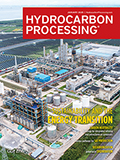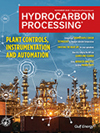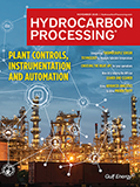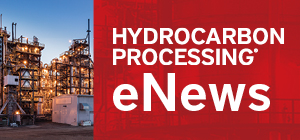
January 2025
Special Focus: Sustainability and the Energy Transition
This article quantifies GHG emissions from various sources, such as fired heaters and boilers, within refinery and petrochemical operations. Based on these quantified emissions, a tailored carbon neutrality roadmap is developed, incorporating carbon reduction, mitigation and offsetting strategies.
This article describes the economic opportunity that synthetic graphite demand growth presents for American and European refiners. It describes the conditions that best suit a plant to be considered for such a revamp. The article also discusses the modifications needed in capital equipment, process conditions and feedstock to execute this change, the typical capital expenditure required to materialize it, and the transformational gross profit enhancements that could result from these modifications, given the product slate upgrade.
SAF will be essential to achieving the aviation industry’s ambitious decarbonization targets by 2050. Regulations will play a large part in increasing the share of SAF used in aviation and defining the qualified products. CO2 utilization and bio-SAF have great potential to supplement aviation turbine demands. Combining the production of bio-SAF and CO2-based industrial processes provides advantages regarding the most efficient use of carbon from different sources, with high efficiency and optimized costs.
Ammonia (NH3) is emerging as one of the most promising H2 carriers, offering solutions to several critical challenges associated with H2 storage and transportation. As H2 is increasingly recognized as a pivotal component in the transition to a carbon-free energy future, efficient storage and transportation systems have become crucial for its widespread adoption.
Combined heat and power, also known as cogeneration, converts one form of energy to two usable forms, typically heat and power. By simultaneously producing onsite electricity and heat, cogeneration systems can provide reliable energy at reduced overall costs. Cogeneration is a very effective pathway to executing decarbonization strategies when coupled with renewable natural gas or other low-carbon fuels.
Process Optimization
The authors’ company has developed a gas expansion-based liquefaction processa using a proprietary machine called a compander. This article describes the newly developed process, including ease of operation and permitting, as well as high quality thanks to in-house design, manufacturing, assembly and testing of key components.
The purpose of this article is to describe, analyze and suggest some technical peculiarities and criticalities that can affect the operation and safety of ebullated bed hydrocracking technology units—a process and mechanical upset scenario during emergency shutdown.
This article describes a method for the simultaneous separation of a mixture containing hydrogen (H2), methane (CH4) and carbon dioxide (CO2), which may result from certain shifted synthesis gas (syngas) mixtures.
Catalysts
This article presents a case study that illustrates how independent catalyst testing was utilized to identify the most effective diesel hydrotreating catalyst.
LNG
The safe, reliable and environmentally sustainable delivery of LNG to consumer markets requires investment in new and expanded infrastructure. Embedding digital technology and insights allows key stakeholders to understand the challenges of such an endeavor, along with pathways to more efficient projects and operations.
Carbon Capture/CO2 Mitigation
At the time of this publication, Gulf Energy Information’s Global Energy Infrastructure (GEI) database was tracking more than 440 active carbon capture projects around the world. These projects include carbon capture projects, hubs and storage facilities. An alternative market for the captured carbon and subsequent credits are the commitments by companies to reduce overall emissions, or even achieve net-zero operations. Such a company may choose to purchase CO2 removal credits to offset their emissions. These credits can be generated and sold by capturing emitted carbon and permanent sequestration. For either system to work, a digital trail must be accurate for companies to buy and sell carbon, as explained in this work.
Trends and Resources

- Digital Exclusive: Root cause analysis on hydrochloric acid corrosion in a diesel hydrotreater unit 12/16
- Digital Feature: Enabling growth through strategic cost optimization for petrochemical and refining companies 12/16
- Rohm awards NextChem feasibility study for PMMA-polymer chemical recycling plant project 12/16
- Westlake to rationalize certain North American chlorovinyl and styrene assets 12/16
- CMB.TECH invests in Chinese ammonia supply 12/16
- Petrovietnam, BASF cooperate in developing green methanol, pioneering the energy transition 12/16




